Mars in 2018 
Mars reaches opposition on 27 July 2018.
The simulations are from Calsky and show Mars as it was expected to be seen through a 10-inch telescope at the date and time indicated. These simulations are all on the same scale and do not reflect the changing apparent size of the planet as its distance from us changes. My images do reflect that change and can most easily be seen on my page for the 2005/6 season. The orientation of the simulated image and my image may not be the same.
I have always found Mars a difficult object to image successfully and have neglected it for several years. However this year Mars will come closer on 27th July than it has been since the abnormally close approach in 2003. Also in June this year a dust storm broke out on the planet which rapidly became planetwide and caused the Opportunity Rover, which runs on solar-charged batteries, to close down as it has insufficient power to continue normal operations. As the closest approach came nearer, I wondered if there would be anything to see on Mars if the dust storm was still raging, as seemed quite likely. So I took whatever opportunities to image Mars presented themselves to see what was to be seen. To make things more difficult, Mars is very low in the sky and, at this time of year in these latitudes, there is no real darkness either.
My first attempt was in the early hours of 8th July using infra-red light. This was the only image I made as I wanted to concentrate on the Moon that night as its libration was particularly favourable for the north-western libration zone. The resulting image is shown below along with the simulation from CalSky for that time. The correspondence encouraged me to believe I had indeed imaged surface features despite the dust storm.
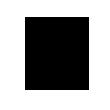
|
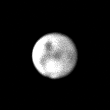
|
Date and Time: 8th July 2018 at 02:33 UT
Camera: DMK 21AF04
Telescope: LX200 at prime focus with an IR-pass filter (>652 nm)
Capture: IC Capture. 1/876", gain 1023, 1795 frames.
Processing: Registax 5. 451 frames stacked, wavelets 1-3 = 20, gamma 0.7.
|
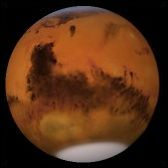
|
My next opportunity was on the night of the 14th July when I was able to use the 14-inch LX200 belonging to the Doncaster Astronomical Society. Conditions were none too good but I did manage both colour and infra-red images, which are shown below.
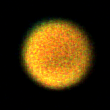
|
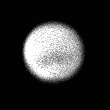
|
Date and Time: 14th July 2018 at 23:29 and 23:43 UT
Camera: DFK 21AF04 with ADC (colour) and DMK 21AF04 (IR)
Telescope: LX200-14 at prime focus
Capture: IC Capture. (colour) 1/218", gain 1009, 1787 frames .
(IR) 1/436", gain 924 1201 frames (IR)
Processing: Registax 5. (colour) 279 frames stacked, wavelets 1-3 = 40, gamma 0.64.
(IR) 242 frames stacked, wavelets 1-3 = 40, gamma 0.64.
|
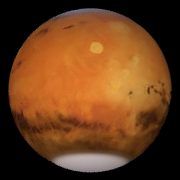
|
My next opportunity was on the night of the 19th July using my own 10-inch LX200. Conditions were none too good but I did manage both colour and infra-red images, which are shown below.
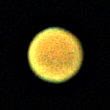
|
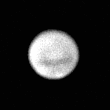
|
Date and Time: 19th July 2018 at 01:03 and 01:31 UT
Camera: DFK 21AF04 with ADC (colour) and DMK 21AF04 (IR)
Telescope: LX200-10 at prime focus
Capture: IC Capture. (colour) 1/218", gain 1009, 1787 frames .
(IR) 1/436", gain 924 1201 frames (IR)
Processing: Registax 5. (colour) 279 frames stacked, wavelets 1-3 = 40, gamma 0.64.
(IR) 242 frames stacked, wavelets 1-3 = 40, gamma 0.64.
|
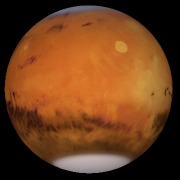
|
My next opportunity was on the night of the 23rd July using my own 10-inch LX200. Conditions were much better and I got some half-decent pictures. The image in visible light was still very weak and the picture below was obtained by using the sigmoid gamma curve shown to make the features stand out. Move your mouse pointer over that image to see an image using only wavelet enhancement and a gamma of 0.6.
Does this mean the dust storm is abating or just that I had better seeing conditions? We will see.
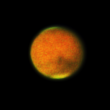
|
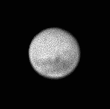
|
Date and Time: 23rd July 2018 at 00:28 and 00:40 UT
Camera: DFK 21AF04 with ADC (colour) and DMK 21AF04 (IR)
Telescope: LX200-10 at prime focus
Capture: IC Capture. (colour) 1/218", gain 835, 1784 frames .
(IR) 1/500", gain 918, 1800 frames (IR)
Processing: Registax 5. (colour) 298 frames stacked, wavelets 1-2 = 10, gamma curve 
(mouseover) wavelets 1-2 = 10, gamma 0.6 contrast 110
(IR) 211 frames stacked, wavelets 1-2 = 20, gamma 0.8.
|
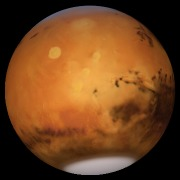
|
Home Back to Mars














